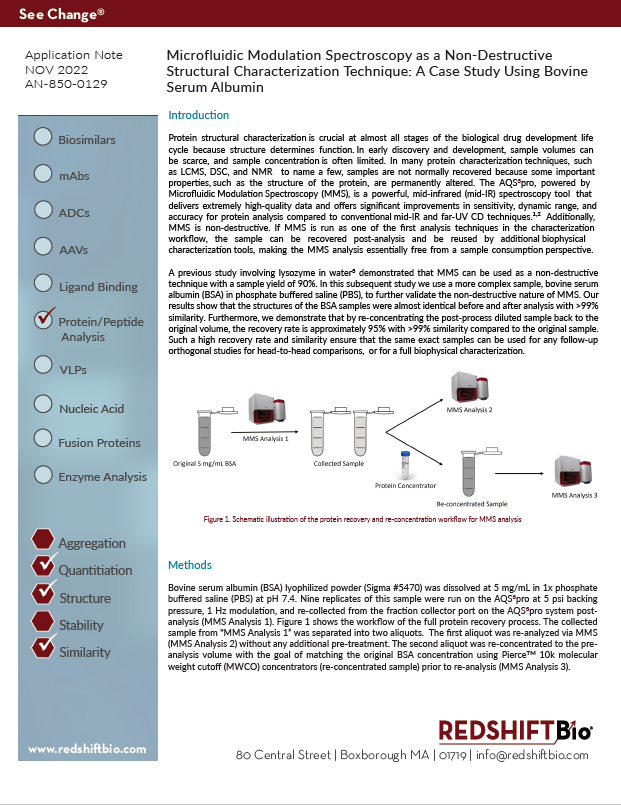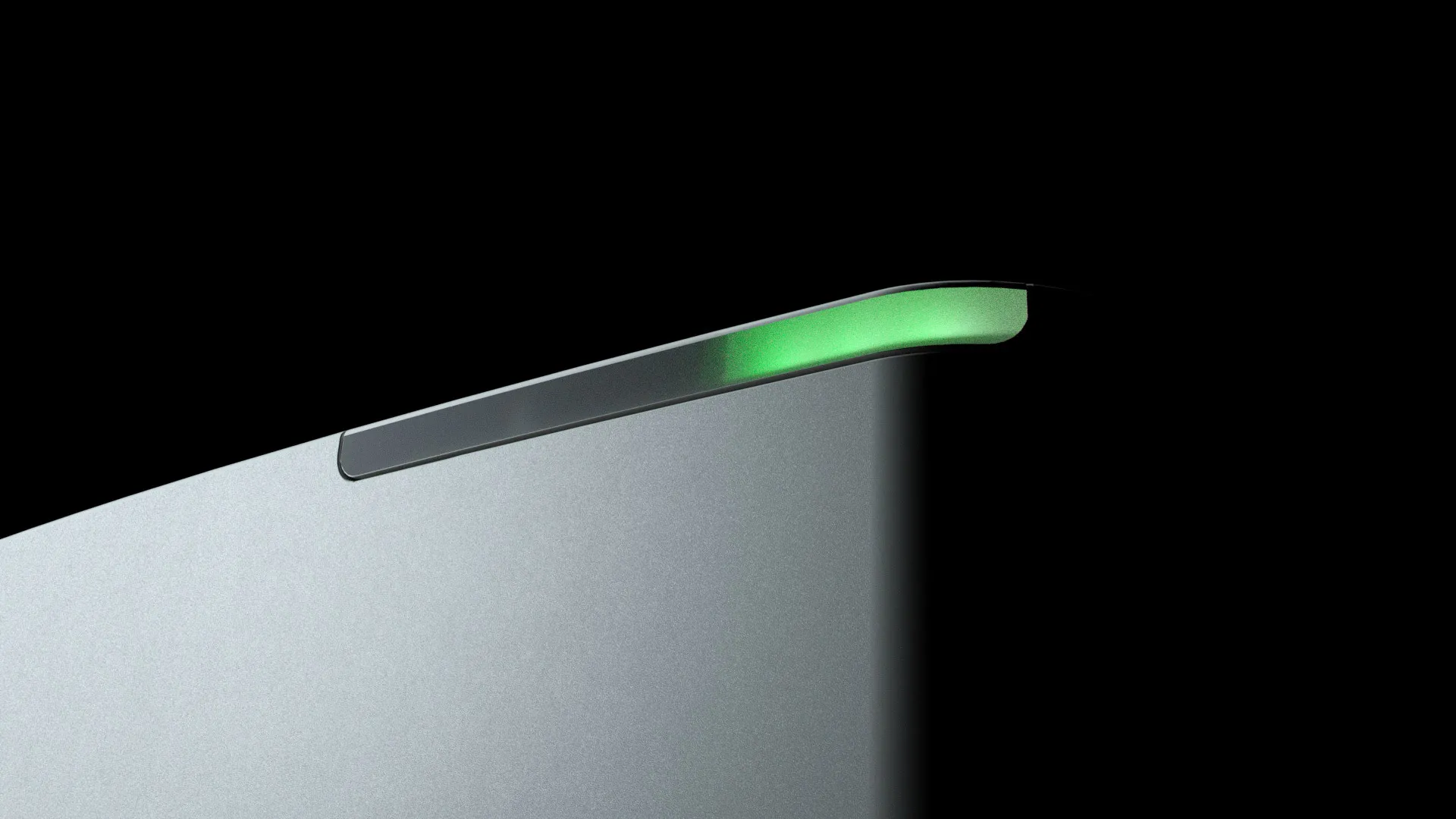
Microfluidic Modulation Spectroscopy as a Non-Destructive Structural Characterization Technique: A Case Study Using Bovine Serum Albumin
Protein structural characterization is crucial at almost all stages of the biological drug development lifecycle because structure determines function. In early discovery and development, sample volumes can be scarce, and sample concentration is often limited. In many protein characterization techniques, such as LCMS, DSC, and NMR to name a few, samples are not normally recovered because some important properties, such as the structure of the protein, are permanently altered. The AQS3pro, powered by Microfluidic Modulation Spectroscopy (MMS), is a powerful, mid-infrared (mid-IR) spectroscopy tool that delivers extremely high-quality data and offers significant improvements in sensitivity, dynamic range, and accuracy for protein analysis compared to conventional mid-IR and far-UV CD techniques. Additionally, MMS is non-destructive. If MMS is run as one of the first analysis techniques in the characterization workflow, the sample can be recovered post-analysis and be reused by additional biophysical characterization tools, making the MMS analysis essentially free from a sample consumption perspective.
A previous study involving lysozyme in water demonstrated that MMS can be used as a non-destructive technique with a sample yield of 90%. In this subsequent study we use a more complex sample, bovine serum albumin (BSA) in phosphate buffered saline (PBS), to further validate the non-destructive nature of MMS. Our results show that the structures of the BSA samples were almost identical before and after analysis with >99% similarity. Furthermore, we demonstrate that by re-concentrating the post-process diluted sample back to the original volume, the recovery rate is approximately 95% with >99% similarity compared to the original sample.
Such a high recovery rate and similarity ensure that the same exact samples can be used for any follow-up orthogonal studies for head-to-head comparisons, or for a full biophysical characterization.


Please complete the form if you would like to download the app note.

